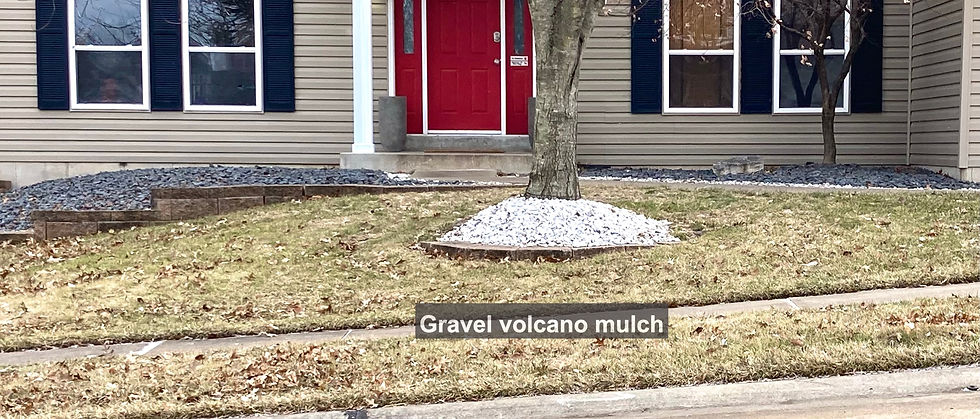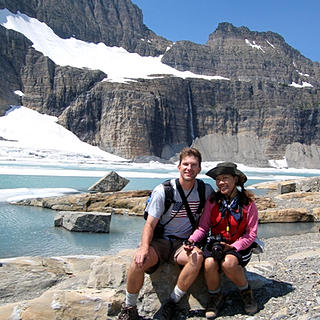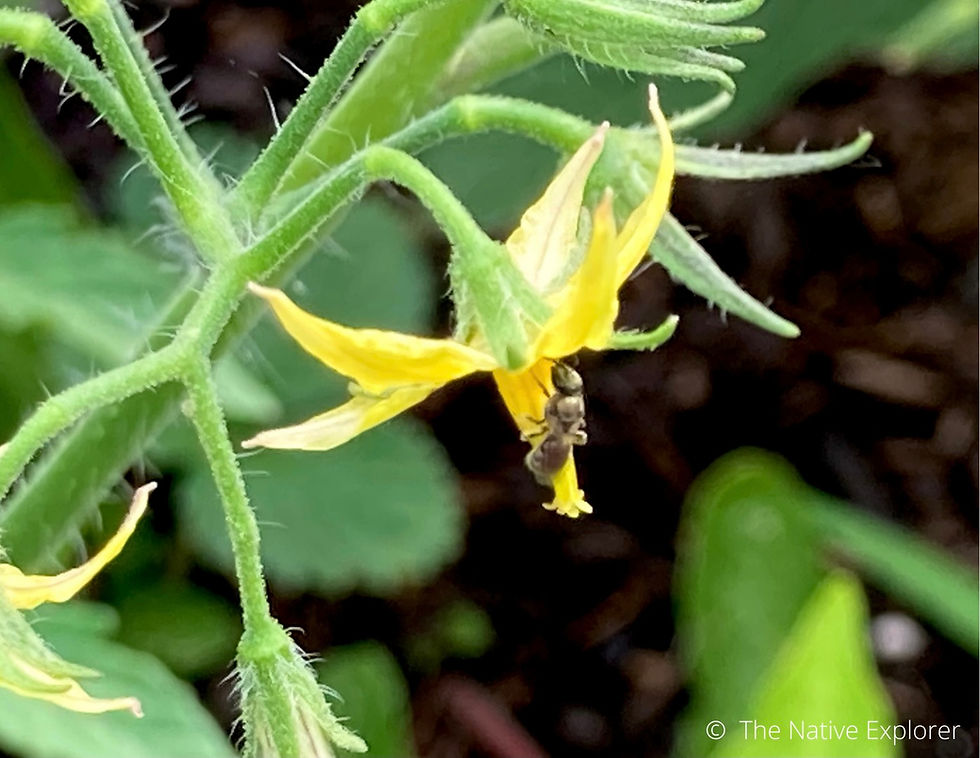Something to mulch on...
- Admin - Aina Ferris
- Jan 28, 2022
- 3 min read
Updated: Jan 29, 2022
by Aina R Ferris, The Native Explorer co-founder
The MO Botanical Garden has a chockfull of information on everything native plant in their Native Landscaping Manual called, "Landscaping with Native Plants: A Gardener’s Guide for Missouri". I find myself browsing through it time and again as it's a fantastic reference for homeowners like myself, who prefer the look of a traditional, formal garden whilst showcasing plant species that are native to the state and the Midwestern region.
The topic below is a direct quote from the link: https://www.missouribotanicalgarden.org/Portals/0/Shaw%20Nature%20Reserve/PDFs/horticulture/NLM%20Ch4.pdf Photos of organic mulched beds are courtesy of St. Louis Native Plants landscape consulting and design company.
Mulch gives gardens a clean, tended and intentional appearance.
Other benefits include preventing loss of soil moisture, controlling soil temperature and suppressing weeds. Mulch may be applied from late fall through spring. In areas where you want to encourage seed germination (woodlands, for example), apply mulch after seeds have germinated in spring and are tall enough to transplant.
Never till mulch into topsoil because mulch is not composted. As it breaks down, it starves plants of nutrients. Mulch must be fully rotted (black in color, the consistancy of sawdust and have no heat) before it can be incorporated into topsoil.
Never till mulch into topsoil until it's fully rotted, with the consistency of sawdust.

Twice-ground composted leaf mulch is one of the more commonly used mulches and is readily available from compost suppliers or garden centers. It is delivered warm or hot and has a slight to strong sour smell because it is not composted completely. This mulch can float so is not recommended for use near stormwater flows.

Shredded hardwood or cedar bark mulch is also commonly used and available. Cedar lasts much longer than hardwood but costs more. Once rained on, it tends to bind together and will not migrate. It is recommended for use in rain gardens.
River gravel mulch comes in various sizes, from pea-sized gravel to three- inch rock. A medium size of one or two inches works best in rain gardens or where storm water will be flowing. It is heavy to move around.
Pine bark chip mulch has large pieces that migrate on slopes and float. It is recommended for use on flat ground.
Natural tree leaves raked up and reused as mulch save money but do not look clean or intentional in planting beds. They are best used in natural wooded settings.
Wood chips from a tree chipper are coarse, uneven and do not look as clean as ground mulches. They work well, however, and are economical.

Fellow co-founder of The Native Explorer, Brian Ferris, has a pet peeve: Spotting front yards that "grow rocks". These are properties that other than turf grass, feature chunks of dull-gray gravel rock where a garden bed would've been. While it's of course the homeowner's prerogative to "grow rocks" instead of plants, it's painful to see gravel rock piled high on a tree's base. (There's even a term for it: "volcano mulching"-- and the term applies to all types of mulch.) According to the website www.fourishingplants.com, "The spaces between the soil are vital for root growth. Gravel mulch which presses the mineral grains together leaves little room for water and air, leading to the difficulty for development of the roots. Besides this, burrowing animals also find it a hostile environment because the denser soil is more difficult to penetrate." Unlike organic mulches, gravel mulch tends to trap leaves and other debris. It is, according to the same website, more challenging to clean a gravel mulched garden bed compared to one that has organic material. Moreover, "it might not be a good choice in urban areas to use gravel mulch as it traps heat."
University of Florida horticulturists warn against applying too much mulch-- even organic ones-- over the root balls of trees.* The practice may either cause rot or hide decay occurring underneath the volcano mulch, leading to an unstable (and potentially dead) tree. In general, mulch should only be between 2 - 4 inches in depth. For trees, mulch 12 - 18 inches away from the trunk.

So, if you know someone overzealously piling on the mulch, please advise them of the disadvantages of an uber thick layer. Tell them weeds will still find a means to pop up anyway!




Comments